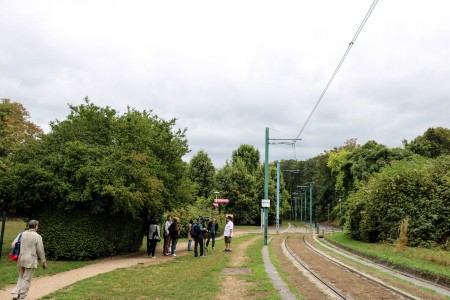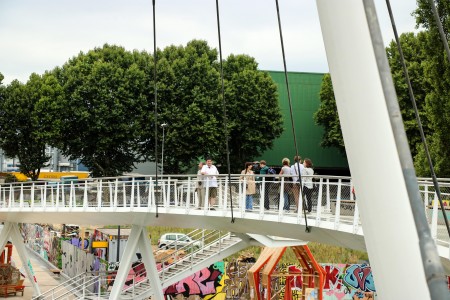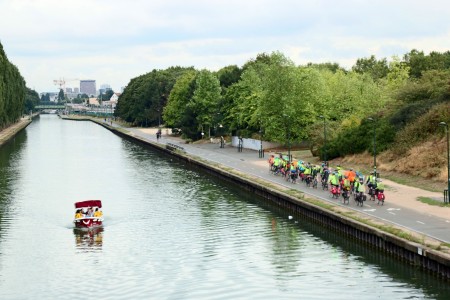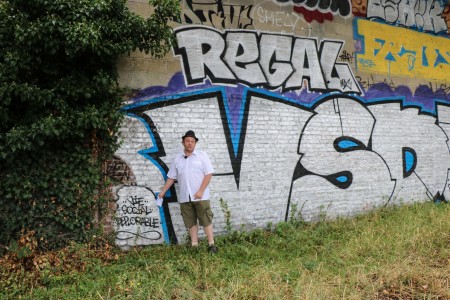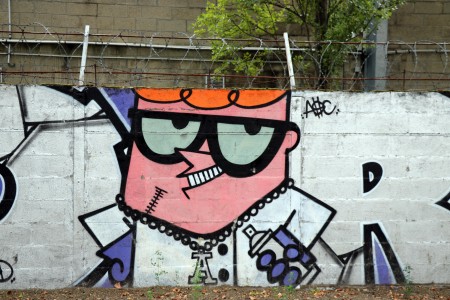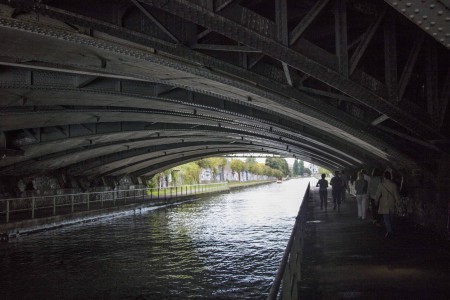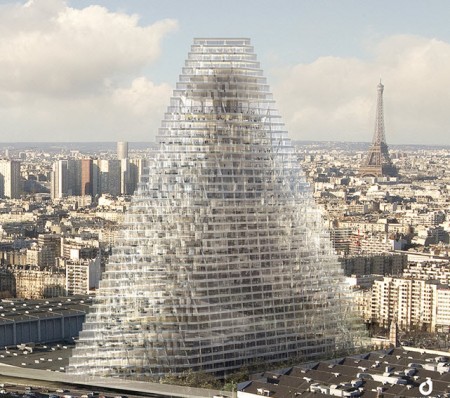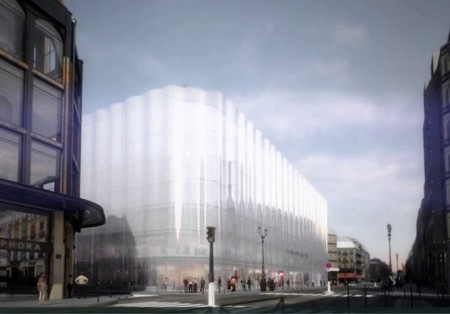Last Sunday, we joined a walking tour organized by the Seine-Saint-Denis Office of Tourism to learn about the “street art” that lines the walls of the industrial zone of the Ourcq Canal. Led by our guide, Thom-Thom, we wended our way from the Bobigny – Pablo Picasso metro station at the end of line 5 through a park to arrive at the canal.
I was surprised to see how much greenery there is between the metro station and the canal. While we traversed the park, called Parc Départemental de la Bergère, I saw cyclists and joggers. And the people we saw on bicycles weren’t your ordinary Sunday-morning cyclists — they were wearing helmets and cycling shirts and shorts and were mounted on shiny, new velocipedes. The joggers, too, were dressed in sleek athletic wear.
Once we got to the canal, Thom-Thom pointed across the water to indicate the wall along which the art was located. To me, it looked like the dreary graffiti that one sees on retaining walls along the tracks of any inter-city train that runs from Paris. Thom-Thom, however, spoke enthusiastically about it and made the following points:
* the people who paint the images do so as a means of leaving their personal stamp on the urban landscape
* the images are painted on decrepit walls of the industrial zone of the canal
* though the “tagging” is illegal, it is largely tolerated because of the location and because the owners of the tagged property do not file complaints with the local police.
We crossed a pedestrian bridge to reach the other side of the canal and proceeded to walk along the wall. Along the way, Thom-Thom talked about the various techniques that street artists use, essentially cans of spray paint, but also roller brushes and stencils. He also talked about the camaraderie that formed among the artists and how groups (called “crews”) would claim an area as “theirs.”
We passed by junkyard dogs who ferociously barked their disapproval of our presence. Happily, they were confined to their compounds by sturdy fences. I noted that one of the dogs barely opened his eyes and continued to lie lazily on the ground. He seemed content to let his companions do the barking. That’s the kind of work that I would want if I were a junkyard dog!
Thom-Thom explained some of the finer points of street art. He pointed out that a group of artists called VSD (Vie Social Déplorable) painted its logo here. Many artists prefer using the color silver because it shows up better in the dark, especially in train tunnels.
Thom-Thom called this cursive art “Gothic” style.
This lovely lady looked rather menacing.
Thom-Thom shared many insights about “tagger” culture and technique on this stretch of the walk. We then left the industrial zone, passing through a tunnel, to continue our promenade down the canal. We now have a new appreciation of street art, thanks to Thom-Thom and the Seine-Saint-Denis Office of Tourism!

